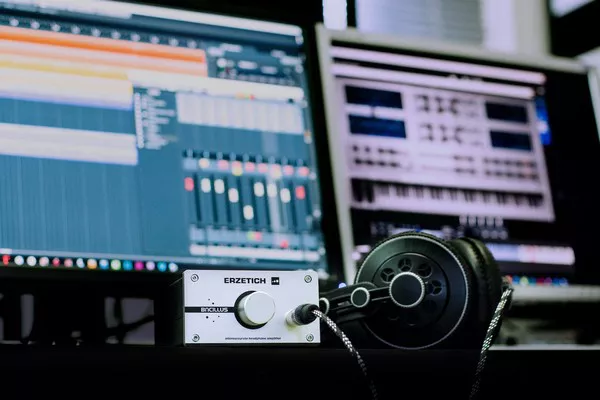In the intricate orchestra of human experience, music holds a profound power over our emotions, memories, and cognition. But beneath the surface of melody and rhythm lies a fascinating interplay between sound waves and brain chemistry. Understanding the biochemical mechanisms through which music influences the brain sheds light on its therapeutic potential and cognitive effects. In this article, we delve into the captivating question: how does music affect the brain chemically?
The Dopamine Rush: Music and Pleasure Centers
One of the key neurotransmitters involved in the brain’s response to music is dopamine, often referred to as the “feel-good” neurotransmitter. When we listen to music that we enjoy, dopamine is released in various regions of the brain, including the nucleus accumbens, the ventral tegmental area, and the prefrontal cortex. These regions are part of the brain’s reward pathway, responsible for processing pleasurable stimuli and motivating behaviors.
Research using neuroimaging techniques such as functional magnetic resonance imaging (fMRI) has shown that listening to music activates these dopamine-rich areas, leading to feelings of pleasure and reward. This dopamine rush is akin to the euphoria experienced during activities like eating delicious food or engaging in enjoyable social interactions. Thus, the connection between music and dopamine provides insight into why music can be such a potent mood enhancer and motivator.
The Stress-Busting Harmonies: Music and Cortisol Regulation
Beyond its ability to evoke pleasure, music also exerts a powerful influence on stress levels and the body’s physiological responses. Cortisol, often dubbed the “stress hormone,” plays a central role in the body’s stress response system. Elevated cortisol levels can have detrimental effects on both physical and mental health, contributing to conditions such as anxiety, depression, and cardiovascular disease.
Studies have demonstrated that listening to music can modulate cortisol levels, leading to stress reduction and relaxation. Slow-tempo music with soothing melodies has been particularly effective in lowering cortisol levels and promoting a state of calm. This stress-relieving effect of music has significant implications for its therapeutic use in clinical settings, where music therapy is employed to alleviate symptoms of stress-related disorders.
See Also: Where Can I Watch Bridezillas for Free?
Rhythmic Resonance: Music, Endorphins, and Pain Perception
The rhythmic patterns inherent in music have a profound impact on the brain’s perception of pain. Endorphins, the body’s natural painkillers, are released in response to various stimuli, including physical exercise, laughter, and yes, music. When we listen to music with a strong rhythmic structure, such as upbeat and fast-paced tunes, our brains synchronize with the music’s tempo, leading to a cascade of physiological responses.
Research has shown that listening to music can increase endorphin levels, resulting in pain relief and a heightened sense of well-being. This phenomenon, known as music-induced analgesia, has been observed across diverse populations, from patients undergoing medical procedures to individuals experiencing chronic pain conditions. By tapping into the brain’s endorphin system, music offers a non-pharmacological approach to pain management that is both safe and accessible.
Harmonic Healing: Music and Neuroplasticity
The brain’s remarkable ability to reorganize itself in response to experiences is known as neuroplasticity. Music has emerged as a potent modulator of neuroplasticity, shaping the structure and function of the brain across the lifespan. This phenomenon is particularly evident in musicians, whose intensive training leads to structural changes in regions of the brain associated with auditory processing, motor coordination, and executive function.
Recent research suggests that even passive listening to music can induce neuroplastic changes in the brain. For example, longitudinal studies have shown that older adults who engage in regular musical activities exhibit enhanced cognitive function and a reduced risk of age-related cognitive decline. These findings underscore the therapeutic potential of music as a tool for promoting brain health and resilience against neurological disorders such as dementia and Alzheimer’s disease.
The Symphony of Emotion: Music and Neurotransmitter Dynamics
In addition to dopamine, cortisol, endorphins, and neuroplasticity, music influences a wide array of neurotransmitters and neuromodulators in the brain. Serotonin, for instance, plays a crucial role in regulating mood, sleep, and appetite. Listening to music that elicits positive emotions can boost serotonin levels, contributing to feelings of happiness and well-being.
Similarly, oxytocin, often referred to as the “love hormone” or “bonding hormone,” is released in response to social bonding experiences. Music has been shown to evoke feelings of connection and empathy, leading to increased oxytocin release and fostering a sense of interpersonal closeness. This neurochemical aspect of music underscores its role in social cohesion and communication, transcending linguistic and cultural barriers.
Conclusion: Orchestrating Neurochemical Harmony
In the symphony of human experience, music serves as a conductor of neurochemical harmony, orchestrating a complex interplay of neurotransmitters, hormones, and brain structures. From the dopamine rush of pleasure to the cortisol-lowering melodies of relaxation, music exerts a multifaceted influence on the brain’s chemistry and physiology.
By understanding how music affects the brain chemically, we can harness its therapeutic potential to improve mental health, alleviate stress, manage pain, and enhance cognitive function. Whether through personalized playlists for mood regulation or structured music therapy interventions for clinical populations, the integration of music into healthcare practices holds promise for promoting holistic well-being.
As we continue to unravel the mysteries of the brain-music connection, let us embrace the transformative power of music as a source of healing, inspiration, and human connection. In the grand symphony of life, may we find solace, joy, and meaning in the timeless melodies that resonate within us all.

























